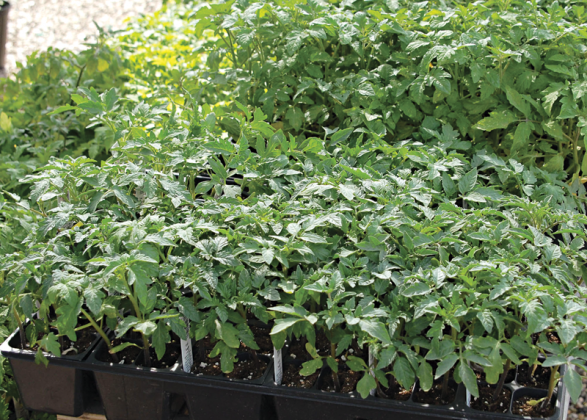
Heather Kirk-Ballard /LSU AgCenter horticulturist
Summertime is the best time to just sit back and enjoy your garden. And while you’re at it, you can start thinking about fall gardening.
Other than watering, occasional fertilizing and weed upkeep (mostly mechanically because chemicals can no longer be used in the heat of summer on turfgrass but can be used in flower beds), it is best not to take on any extensive landscape installations the next couple of months. Phew. You’re off the hook. What a relief. Spoiler alert: You still have that lawn to contend with.
As a best practice, planting trees and shrubs during the heat of summer is not recommended. This is not to say that your plant will die if you plant it in the summertime. Rather, it is more of a recommendation to wait until the weather cools in fall when the plant will have less stress and a better chance of survival
Planting in containers is a fine idea any time of year, making it a great way to continue gardening year-round. You will need to water and fertilize container plants more frequently in the summertime, however. Plants cannot cool themselves in the absence of water and will wilt quickly as plants transpire to cool themselves just like we sweat. As you water more frequently, you will also flush more nutrients from the pots as they drain. Use a general-purpose liquid fertilizer every seven to 14 days to help plants along.
Turfgrass and tropical plants thrive in summertime. Right now you can enjoy those flowering tropicals such as hibiscus, gingers, angel’s trumpet, cannas, Turk’s cap, mandevilla, bougainvillea, coral vine, allamanda, passionflower, giant bird of paradise, esperanza, firecracker plant and hummingbird bush. If you don’t have some of these already, add them to your list and plant them in late September to enjoy next summer.
Laying sod in summer is a tough call. On one hand, the heat is very stressful on turf with shallow root systems. However, roots will have more time to become established before they go dormant in the winter around November through February in Louisiana. If you lay sod in the summertime, be sure it is well watered.
Newly installed lawns should be watered thoroughly. Keep foot traffic off the sod for one week and water every day in the morning. With the heat, lots of water will be lost to evaporation, causing stress. Avoid watering at night as the sod will remain wet, encouraging fungal diseases. St. Augustine grass, in particular, is extremely susceptible to fungal diseases such as large patch and gray leaf spot. You can cut back on the watering after the first week and move to an every-other-day approach. And by week three, you can water twice a week, depending on rainfall.
So, while you’re sitting around waiting for cooler days, you can use this time to begin planning for your fall garden. And now is the time to start ordering those vegetable seeds. These will be our cool-season crops such as broccoli, Brussels sprouts, cauliflower, Chinese cabbage, cabbage, kale, lettuce, mustard greens, and root crops such as carrots, beets and radishes. You can plant the transplants as early as mid- August, but our LSU AgCenter state vegetable specialist suggests waiting until mid-September.
In the meantime, you can still transplant another fall crop of heat-set tomatoes along with bell peppers. And keep the eggplants and okra going. They should be really producing by now.
Fall is a great time for those larger landscape projects. As the weather cools, planting trees and shrubs becomes a lot more ideal. Your yard is important — it’s one of the first things people see when looking at your home. Work with licensed landscapers to help select your plant materials and properly install and maintain your yard.
Why use a licensed landscape contractor? Because licensed landscape contractors have years of experience in the landscaping field, plus, they must pass a professional exam. In Louisiana, it is the Certified Nursery and Landscape Professional license.
Certified professionals must be knowledgeable in plant identification, soils, fertilization, turfgrass management, proper planting techniques, pesticide application, irrigation and landscape design, as well as environmental standards for applying chemicals and associated regulations. Moreover, a licensed landscaper is bonded and insured, protecting your family financially if any property damage occurs and often offering warranties on plants they have installed. The certifications are obtained through the Louisiana Horticulture Commission in the Louisiana Department of Agriculture and Forestry. You can check the Louisiana Nursery and Landscape Association website for a list of licensed professionals at www.lnla.org.
Keep cool in these dog days of summer by staying inside during the heat of the day. Make your plans for your fall garden in the cool of central air conditioning. You can also focus on caring for and building your indoor plant collection. Remember, plants help clean particulates out of the air while also creating oxygen to breathe. Plants are super cool.
